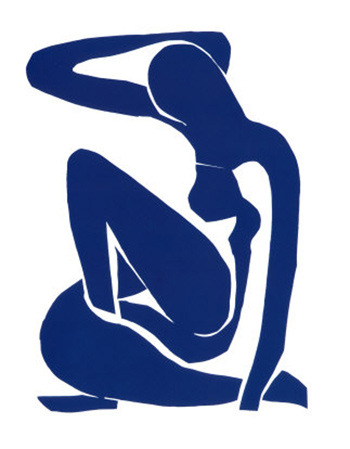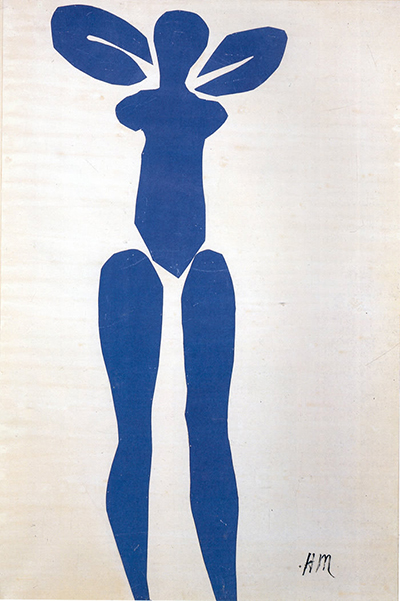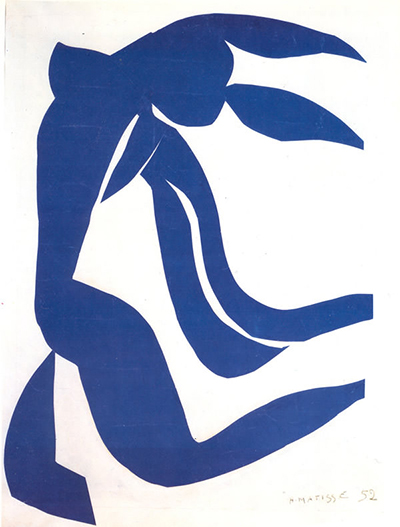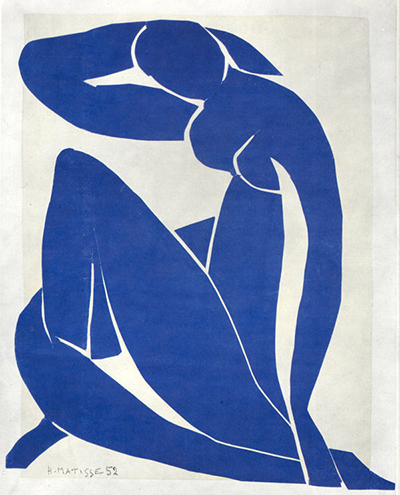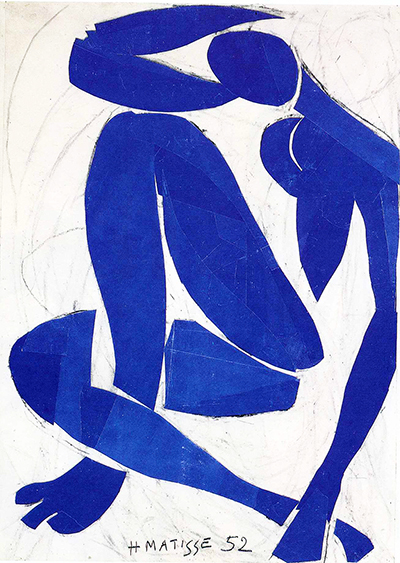Turning his back on a career in law for art, Henri Matisse, was one of the 20th century’s most influential artists.
Produced in 1952, the Blue Nudes are a series of four collages by Matisse. Until this point, although the artist had been making paper cut-outs for 11 years, he had yet to use the medium for figurative work. The Blue Nudes are a striking example of what Matisse called “cutting directly into colour” and are among the most celebrated and iconic of his works. Negating the need for subjective brushwork, the gouache découpés style also ensures clarity of contour.
In preparation for these works, Matisse filled a notebook with studies. He then created a figure that was abstract and simple, before incorporating the nude into his large-scale murals. Comprising cut paper gouache strips stuck on a white background, the seated figure in a Blue Nude collage faces to the left of the image with the right arm raised. Blue Nude VI was actually the first in the series and reveals the degree to which Matisse constantly altered the image, adding and removing separate pieces of blue paper and searching for the right image in the faint contour of charcoal lines.
The other three nude cut-outs have not been given this explorative treatment but appear to be cut from a single sheet, though changes are visable in some cases. In all of his collages, each of the nudes is unique. This ensures that the making of the work shares modernist principles – art isn’t replicable so cannot be dismissed as mere decoration. The paper cut-outs of Matisse's Blue Nude series were part of his abstractionism period, and were created near the end of his prolific life.



